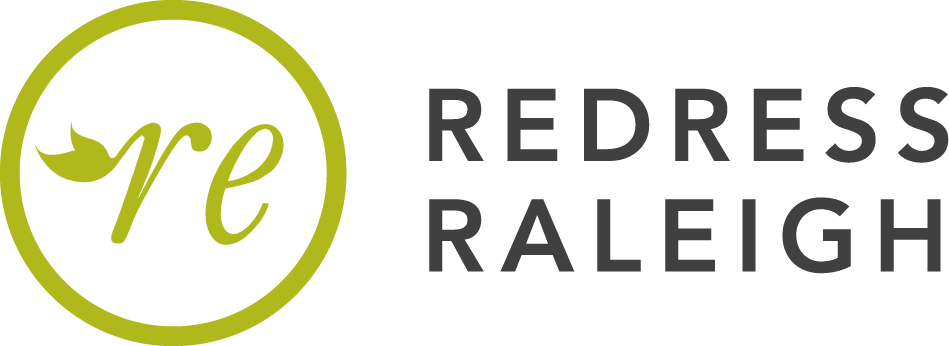This is my personal “why”:
Growing up, I remember my mom laying out pattern pieces on the table, the orange marks on the fabric, and the scritch scritch of the fabric scissors. I remember watching her detailed construction and dedication to making. I remember the joy of having something made just for me.
As I got older, I realized that what I thought was ‘cool’ and what the mainstream thought was cool were two different things. But, I wanted to be cool. Being cool cost money - my family did not want to purchase certain clothes from certain stores, so if I wanted it, I saved for it.
These 2 ethos of what fashion is have stuck with me: that it is joyful and that it is valuable.
Throughout college and my career in architecture, I always had this picture of fashion in the back of my mind. And finally, in 2008 I decided to do something about it. I sought out collaborators and laid out my values. Redress Raleigh was born.
At the same time, I was a consequence of the economic times and was laid off from my job in architecture. While I was searching for employment, I decided I wanted to do something different and ended up taking a lower management position at a mainstream retailer.
Some aspects of the job fit well with my love of fashion - the joy of a busy day with happy customers, the value of helping someone find the perfect gift. Others, not so much.
I distinctly remember standing over a pile of clothing with box cutters almost in tears. These were called “Damaged and Defectives” and it was part of my job duties to slice into the fabric of each one and make sure I destroyed it from being worn before throwing it in the garbage. I could not fathom why this is something a giant multi-billion dollar company would do, instead of donating them. I still don’t.
I also can still smell the offgasing from the hideous plastic flip flops and feel the smooth vinyl of the window clings that we took down and threw out on a regular basis. I can hear the rattling noise of plastic hangers going into the bin to be trashed at the end of the day. Reusing them, I was told, was too costly….
Speaking of cost, do you know how much I made at this job, which enabled me to open and close the store, access the safe, and lead a team of employees? $9.75 an hour. I was one of the highest paid employees in the store but I made less working that I did on unemployment.
I was already learning more about the impacts of the fashion industry through research and such but this was a personal, life-defining experience that catalyzed my drive to make it better.
Unlike many others within the fashion industry, I was lucky enough to have better options. I quit that job, went to graduate school for textiles, and continued working on Redress Raleigh, where I now serve as the Executive Director.
—- Beth Stewart, Executive Director of Redress Raleigh

